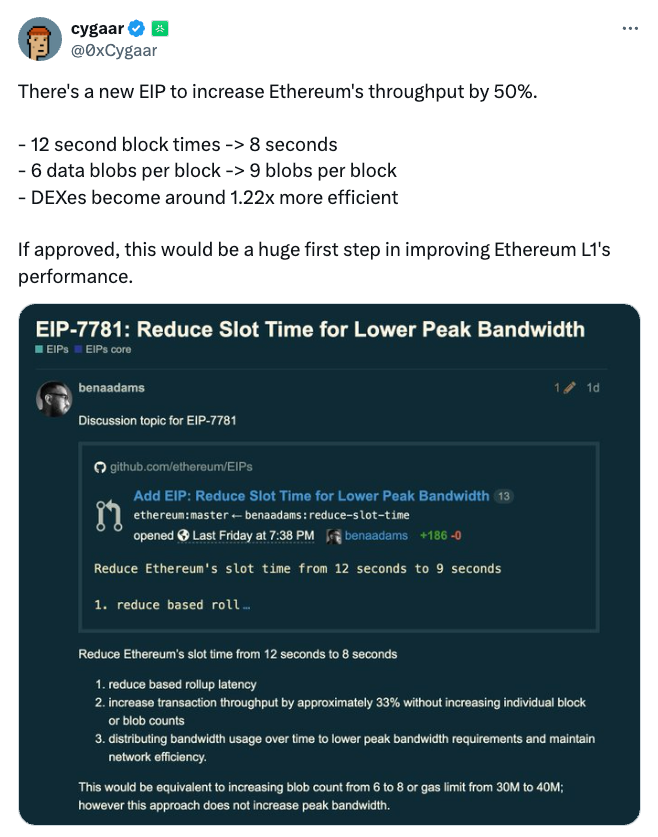A new Ethereum Improvement Proposal (EIP-7781) aims to significantly improve the Ethereum network’s efficiency by reducing block times by 33% and increasing data capacity, resulting in a 50% boost in overall throughput, according to developers.
Key Features of EIP-7781
EIP-7781, introduced on October 5 by Illyriad Games co-founder Ben Adams, proposes reducing block times from 12 seconds to 8 seconds. In addition to faster block generation, the proposal seeks to:
- Enhance Layer-2 Solutions: Improve latency for rollups.
- Expand Data Capacity: Boost the capacity of blobs, temporary data structures designed to lower Layer-2 network fees.
Developer Support and Industry Implications
Pseudonymous developer Cygaar highlighted the importance of EIP-7781 in an October 6 post on X, calling it the “first huge” step toward upgrading Ethereum’s base layer, especially as many developers have shifted their focus to Layer-2 scaling solutions. The proposal also aims to distribute bandwidth usage over time, reducing peak bandwidth requirements without increasing individual block or blob counts.
Broader Support from Ethereum Researchers
Ethereum Foundation researcher Justin Drake expressed his support for the proposal on GitHub, noting its alignment with long-term goals set by Ethereum co-founder Vitalik Buterin and other Ethereum scaling organizations. Drake pointed out that reducing block times could:
- Improve the efficiency of decentralized exchanges like Uniswap v3 by 1.22x.
- Save an estimated $100 million annually in centralized-to-decentralized exchange arbitrage.
- Lead to better execution for users.
Impact on User Experience and Smart Contracts
Drake further noted that the proposal would enhance the Ethereum smart contract user experience by reducing transaction confirmation times by 33% and distributing peak load more effectively across the network.
Potential Challenges: Risks to Solo Stakers
Despite the potential benefits, some developers raised concerns about risks to solo stakers. Shorter block times could increase execution state growth, which refers to the expanding amount of data on the blockchain. This growth would require more powerful hardware and bandwidth, creating challenges for stakers who maintain the blockchain’s state under these tighter timeframes.

